“What did you do over summer vacation?”
Other kids in my middle school class likely answered that question with such things as going on a family vacation to Florida, maybe 4-H Camp or just hanging out with friends around a swimming pool. I spent most of one particular summer in the Berkshire Evergreen Cemetery, voluntarily documenting and mapping the headstones.
I’ve always been fascinated by cemeteries and never found them creepy to walk in, day or night. To me they are places to get away from it all, to relax, to think, to reflect on all my dreams for life. Being surrounded by death like that makes you appreciate living. Thanks to the Internet I’ve discovered I’m not so alone in these feelings, but as a kid very few of my friends could understand my fascination and fewer still would join me in my various cemetery adventures.
One youthful journey that I made with my father reigns over them all. We were visiting family graves in Speedsville at the time. I must have been eleven or twelve years old. While Dad tended to watering flowers and plants that had been brought earlier that year, I wandered around and read the tombstones. One stone quickly got my overly active imagination going. It was one of the earlier stones in the graveyard and at the top was carved a hand with a finger pointing downward. From the finger dangled three chain links, one of them broken. I was instantly convinced that finger pointing down could only mean one thing, this poor sinner was bound for Hell. When I showed Dad the stone, he didn’t know what it could possibly mean either. The mystery would remain with me for almost thirty more years.
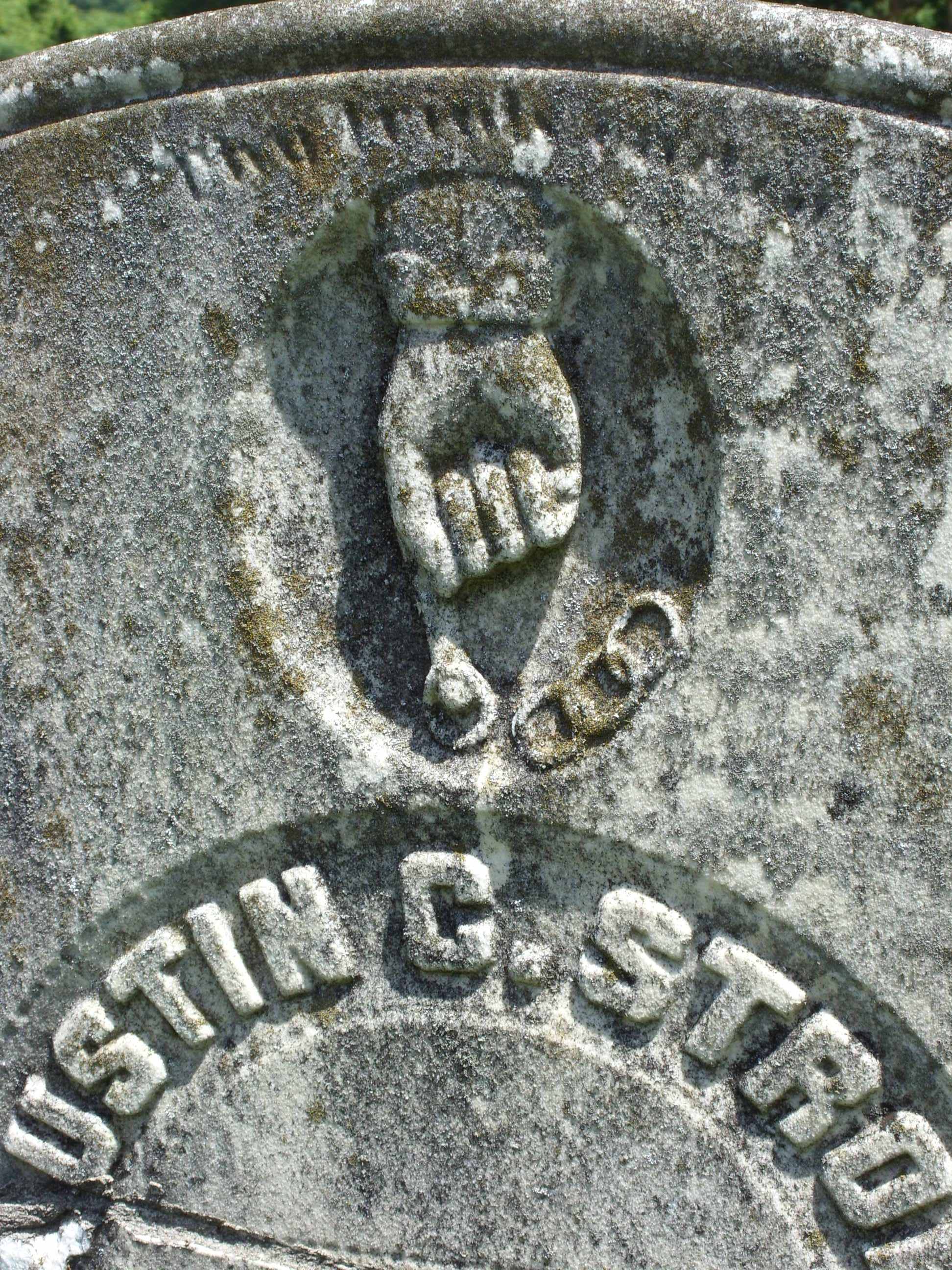
I started taking pictures in cemeteries in my early twenties. Whole weekends would be devoted to cemetery hunting and grave walking. I occasionally found others to join me, but most of the time this was a solitary practice, just me and my camera. My images eventually started to focus on the intricate carvings on the headstones: the different types of flowers, trees, animals, birds and a variety of archaic symbols, including many, many headstones with hands in various poses on them. I remembered the stone I’d seen with my father all those years ago and knew there had to be a reason and meaning behind all these things.
My serious research soon began.
In North America the earliest markers erected were generally unrefined and simple. The inscriptions, if indeed they bore an inscription at all originally, have in many instances eroded away or crumbled off. These stones are generally from what is called the Federalist Period, 1789-1850, and sometimes offer us little information. But even the crudest markers can tell us a great deal about the history of the region during this time.
One of the most popular symbols displayed prior to 1850 is the funerary urn. These appear with great regularity on 19th century gravestones in all settled areas of the United States and Canada. The urn was a well-understood symbol of death and the mortality of the body. Quite often the urn was accompanied by the Tree of Life (not to be confused with the Weeping Willow symbol that will be explained later). This provided a sacred message for the living; although the individual had perished, their remains would provide the seed for new life. When this same tree appears to be growing out of the urn it expresses the Western religious understanding of the hope of everlasting life.
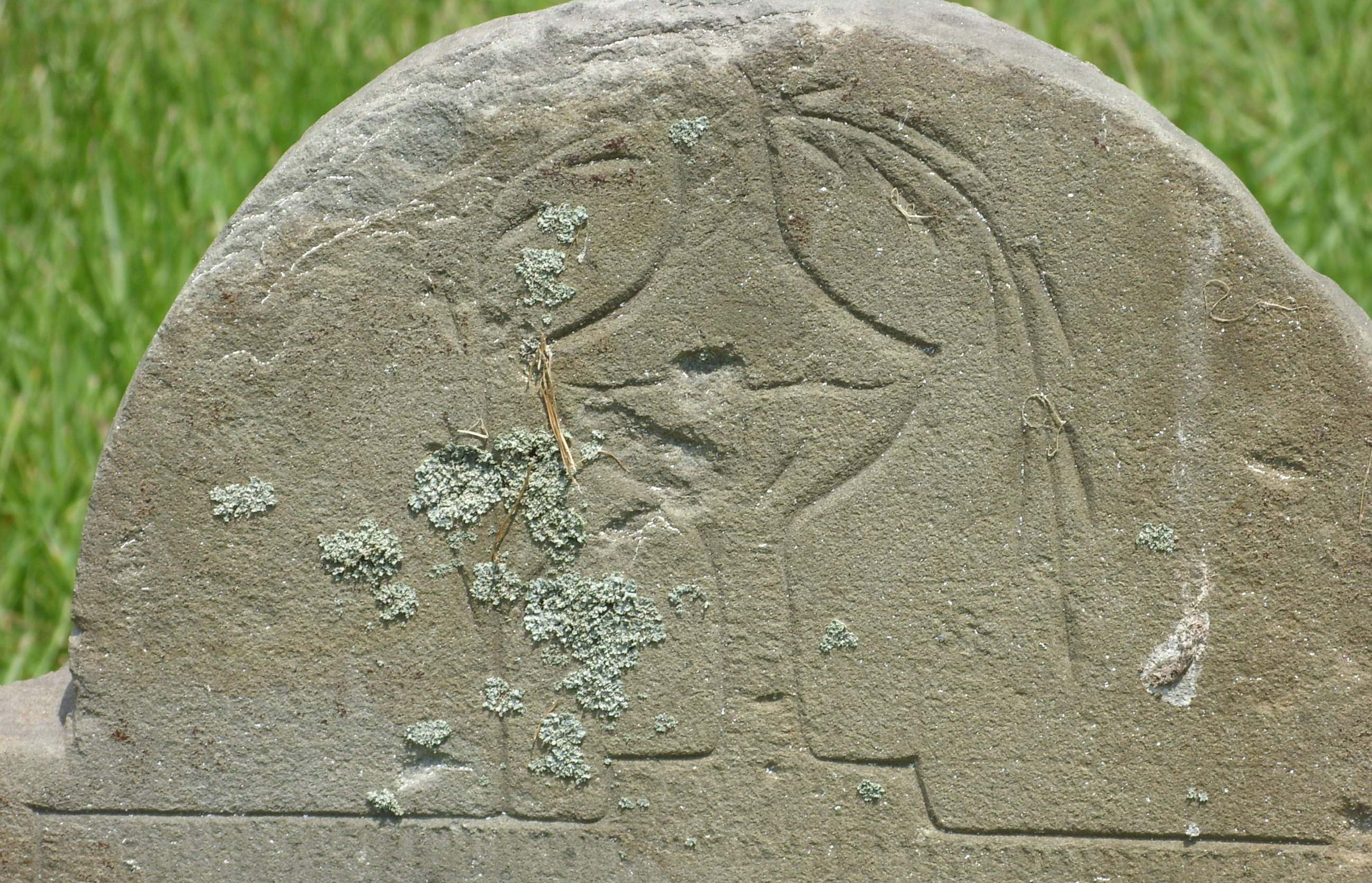
Early American example of funeral urn with Tree of Life sprouting from the top. Athens, PA.
The urn and Tree of Life made perfect sense to me, but when I saw my first tree-stump-shaped grave marker, I was baffled. Why would anyone have a headstone shaped like a tree stump?
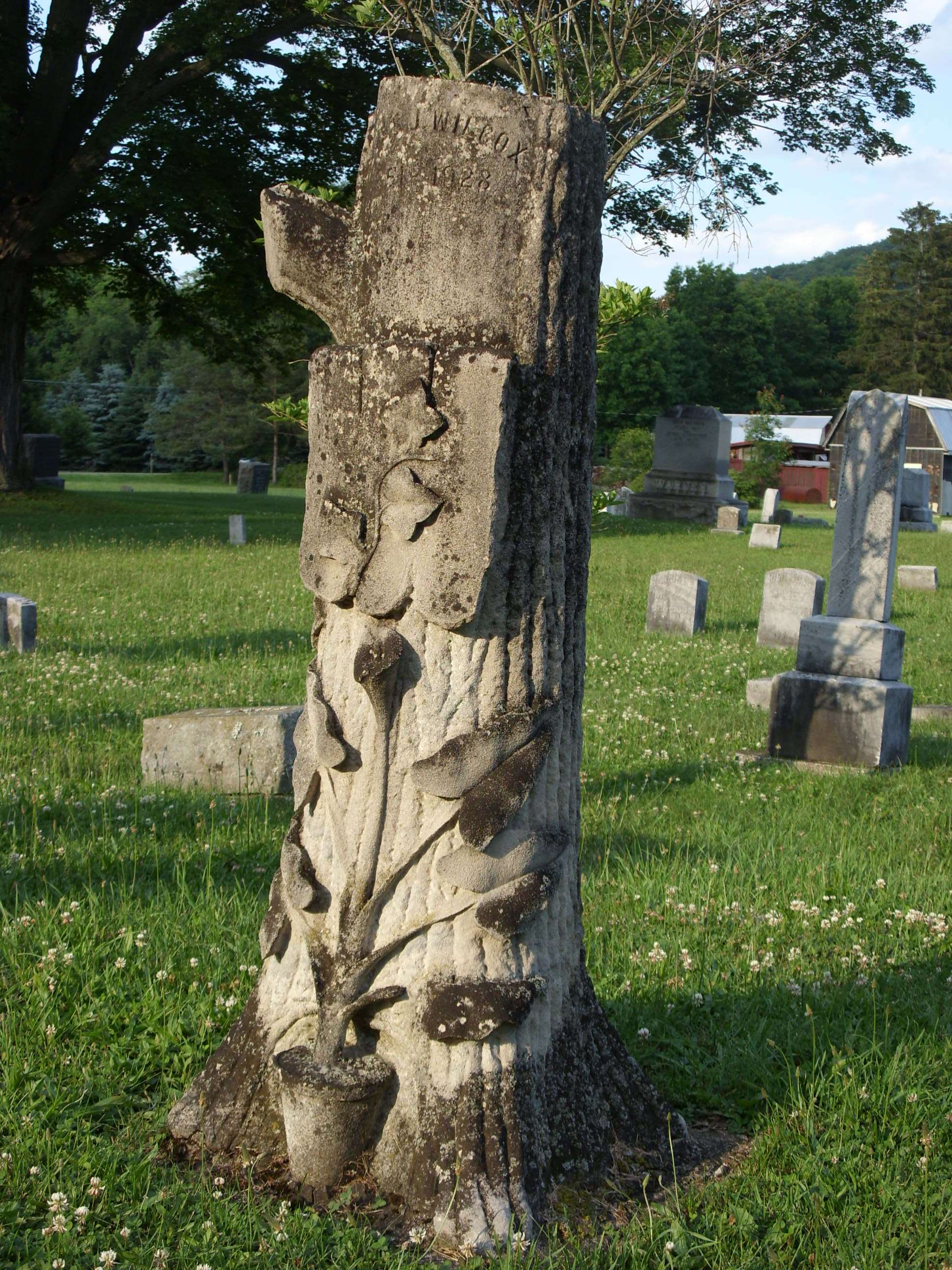
Woodmen of the World grave marker.
I discovered there was a fraternal organization called Woodmen of the World and to have the graves easily identifiable by their brothers, the headstone would be carved into the shape of a tree stump. One tree symbol led to another. The Weeping Willow mentioned earlier was a common symbol found in Great Britain during the neoclassical period (1660-1740) and was intended solely to represent perpetual mourning and grief. You will find countless depictions of the willow on grave markers from the nineteenth-century in our area as well. Oak leaves and acorns on tombs stood for power and longevity. Laurel branches often mark the graves of those who have served their countries with great distinction.
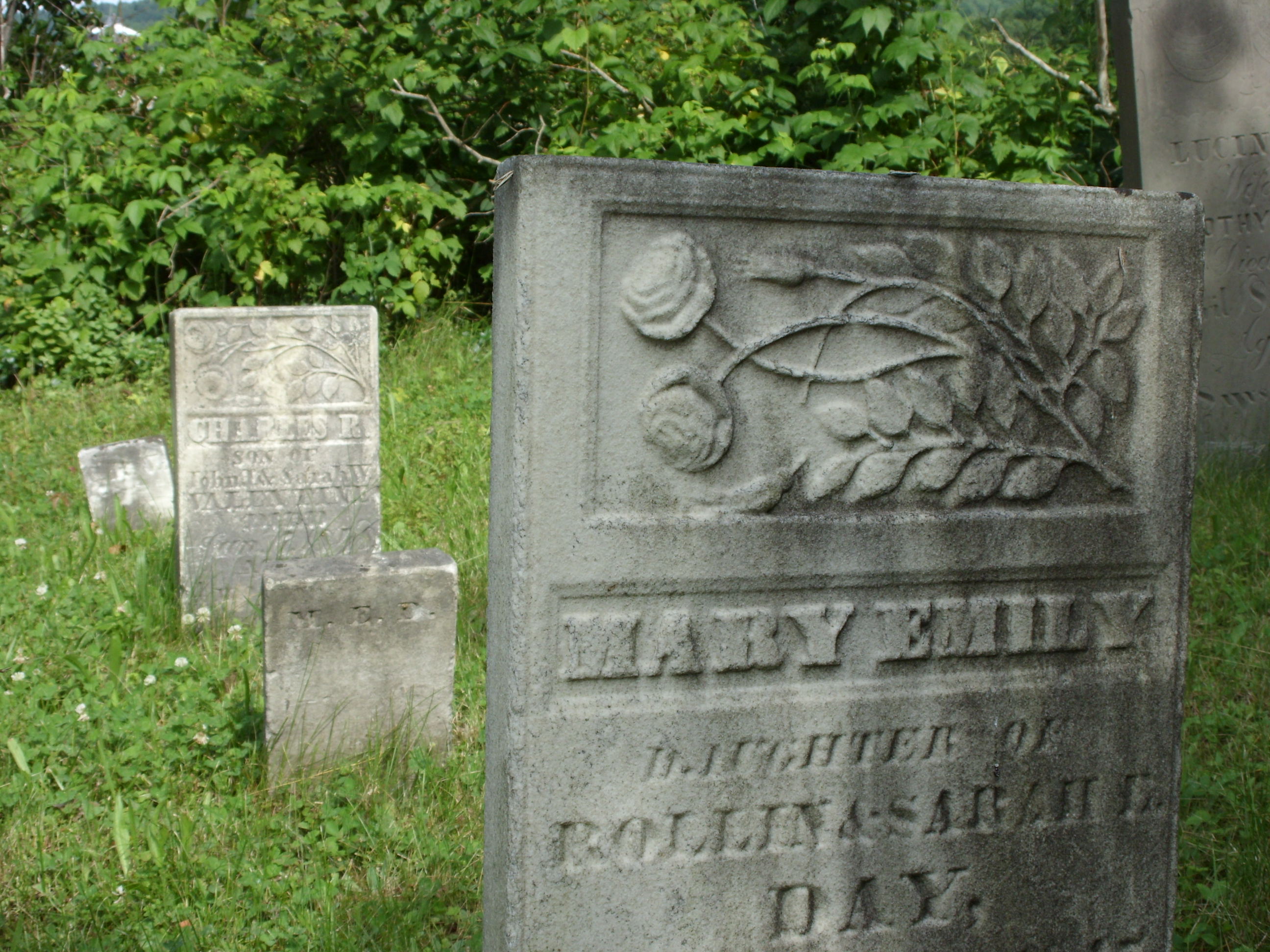
Roses in full bloom symbolizing a full life. – Candor, NY
Then came the flowers: roses, poppies, lilies, and sunflowers just to name a few. Not only did each flower have a meaning, but the flowers arrangement and stage of life could tell the informed observer about the person whose remains lay beneath. This is most visible in the rose. A rose bud will most likely mark the grave of a child or young, unmarried woman, while roses in full bloom are carved on the stones of those who have led long, productive lives. A wreath of roses, or wreaths of any kind, speaks of eternity. Anything round, such as wreaths and orbs, have long been symbolic of things that are meant to last forever, just as the familiar circle, or band, of gold many of us wear for a wedding band does.
In hot pursuit came the animals one finds carved on graves. The two most popular are the lamb and the dove. A lamb will mark almost exclusively the grave of an infant or a very young child. Doves can be found in various postures from sitting upright, to flying upward or downward to lying flat on their back, feet curled up in the typical image of a dead bird. As with flowers, each of the dove’s positions has a different meaning. Sitting upright means the soul of the deceased is believed to be at rest. The bird flying upward represents the soul’s transcendence into Heaven, downward it symbolizes the spirit of Christ coming down to take the soul. If the bird is flat on its back, chances are the life of the deceased was suddenly cut short.
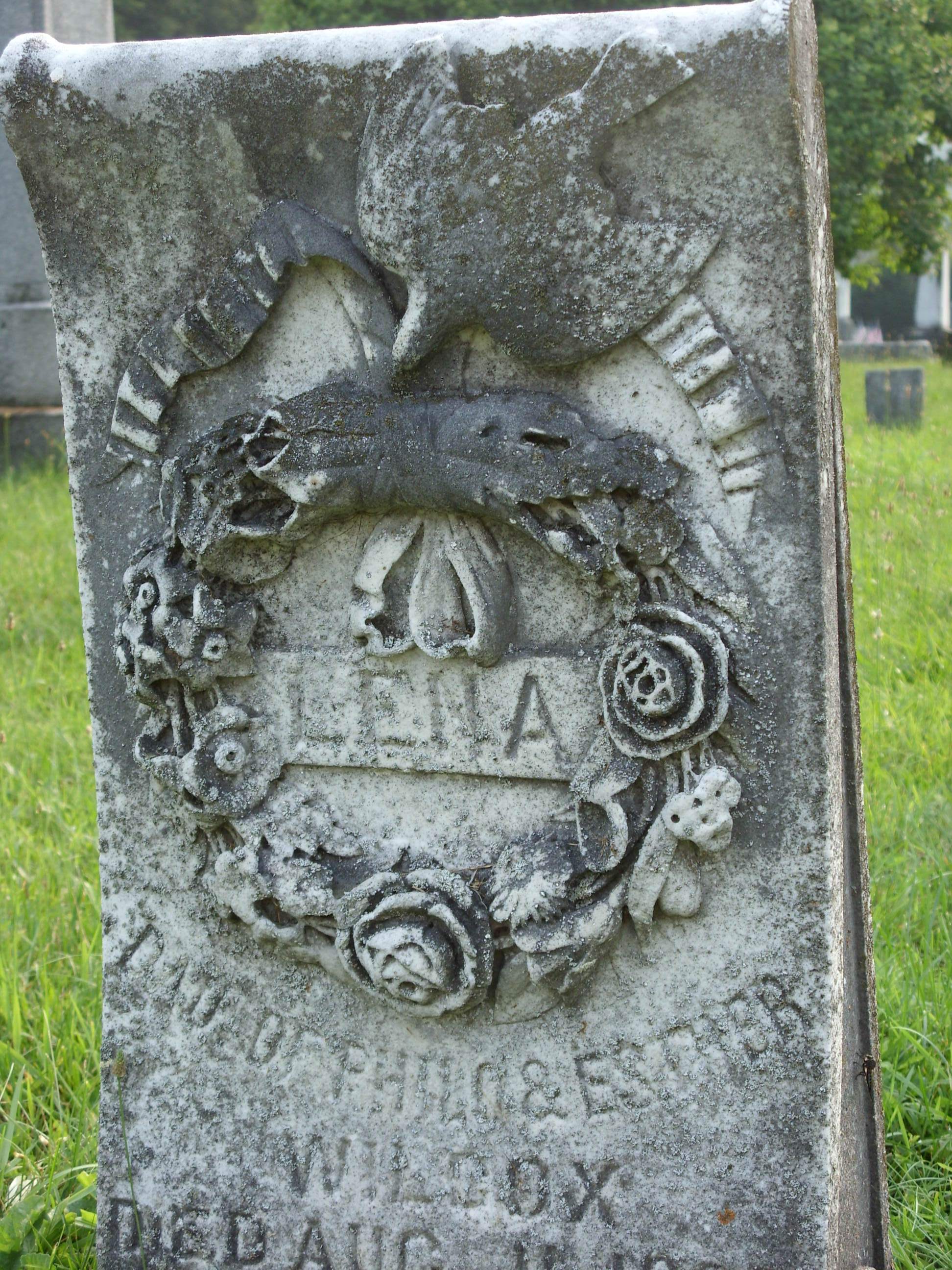
Holy Spirit descending in the form of a Dove and a wreath of flowers all in full bloom. – Berkshire,NY
The Masons, along with countless other fraternal and sorority organizations, use a variety of symbols to identify the final resting places of their members. Masons view the beehive as a symbol of industry. A beehive may also mark the grave of a Mormon. If you find a stone carved with an eagle and the number thirty-two, this marks the grave of a 32nd Degree Scottish Rite Mason. The most common of all Masonic symbols are the compass with the square along with the obelisk-shaped headstone itself. The Ancient Order of Odd Fellows often uses a three-linked chain where one of the links is snapped open, symbolizing the severance of the dead from the living.
Wait. What? A three-linked chain with one link broken? Where had I seen that before? The Speedsville cemetery with my dad, of course! Did that mean the deceased really wasn’t bound for Hell as I’d first imagined? I searched further and found a reference to hands, and more importantly, hands with fingers pointing in various directions. I was about to have my answer.
You’ll find a lot of hands on graves. Some hands are clearly folded in prayer. Other times, the hand of one person may be seen holding the hand of another. In the case of two different hands behind held together, look very carefully. A hand that reaches down and may appear a bit larger than the one below symbolizes the Hand of God fetching up the soul of the deceased. Sometimes the cuff of a man’s shirt or a lady’s blouse has been added and this could represent the hands of a husband and wife held together for all eternity. Hands with the fingers pointing upward are meant to guide the soul in the direction of heaven. Finally, the hand with a finger pointing downward means that those on Earth have been called to witness the mortality of humanity, that the deceased has been chosen by God. My dearly departed friend in Speedsville wasn’t Hell bound after all. He was merely a member of the Ancient Order of Odd Fellows whose family had left behind a symbolic reminder of the mortality of us all. That wasn’t even close to the sinister imaginings I’d harbored all those years.
As you can see, a vast number of iconographic symbols and themes grace the headstones of cemeteries. Only a very few have been mentioned here. Gravestones are, in many aspects, works of art. Some are masterpieces, while others are representative of the crude and harsh pioneer environment our own ancestors endured.
Every grave marker has a symbolic message all its own to share, a voice waiting to be heard. These stones have stories to tell, but it takes a willing and observant person to sit down and read that message and understand the story left so lovingly behind by the family who placed it there.
What did you do over your summer?
I walked through and took pictures of what I believe to be some of the most beautiful and fascinating stone sculpture gardens ever created by man and read the stories carved in the stones of our local cemeteries.
This article first appeared 6 Oct. 2010 in the Tioga County Courier, Owego, NY.
All photos courtesy of the author.
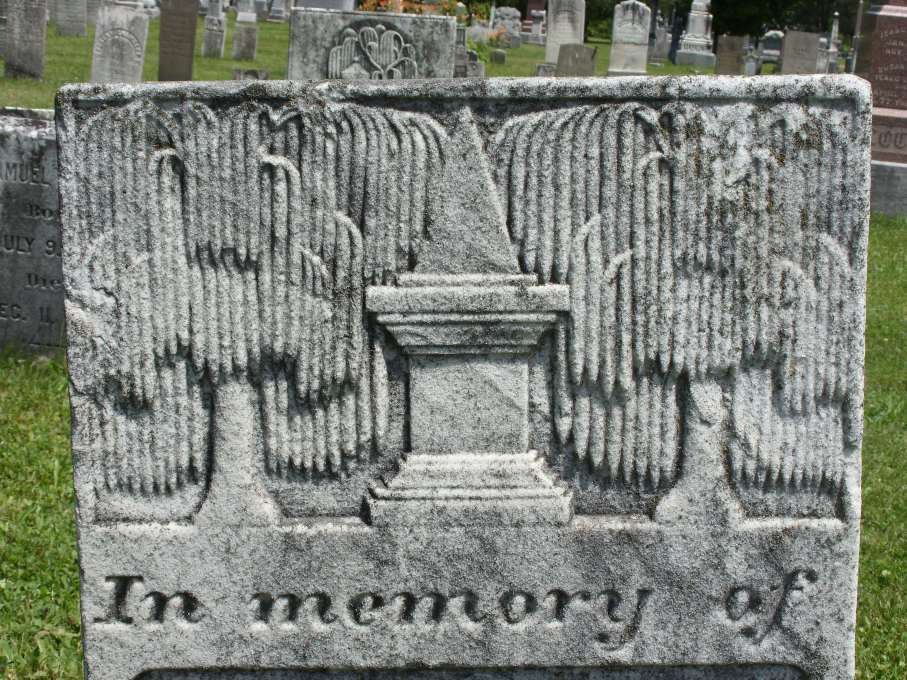
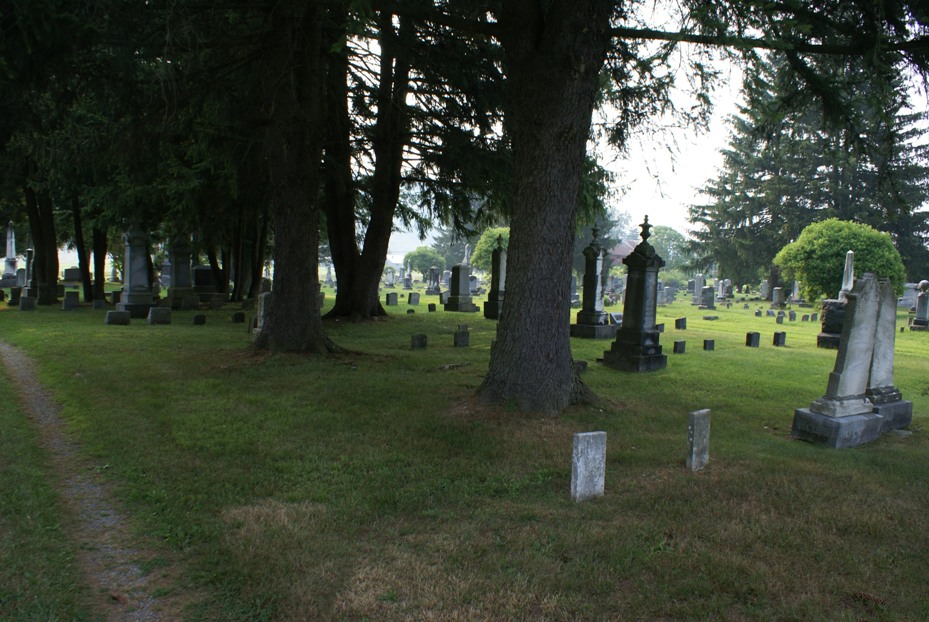
Recent Comments